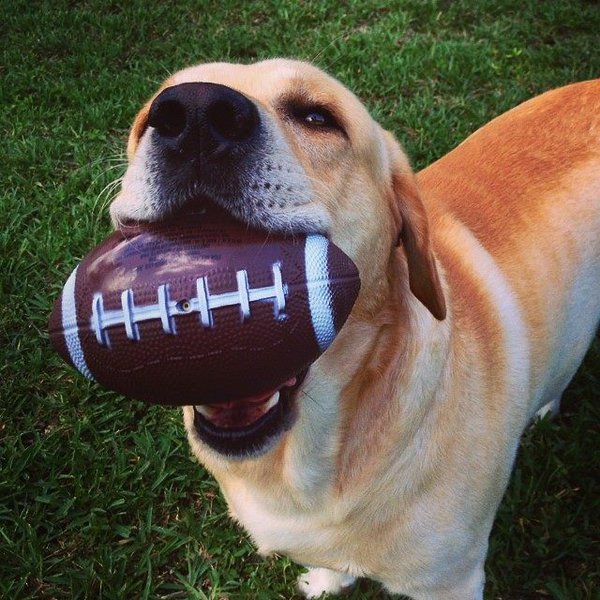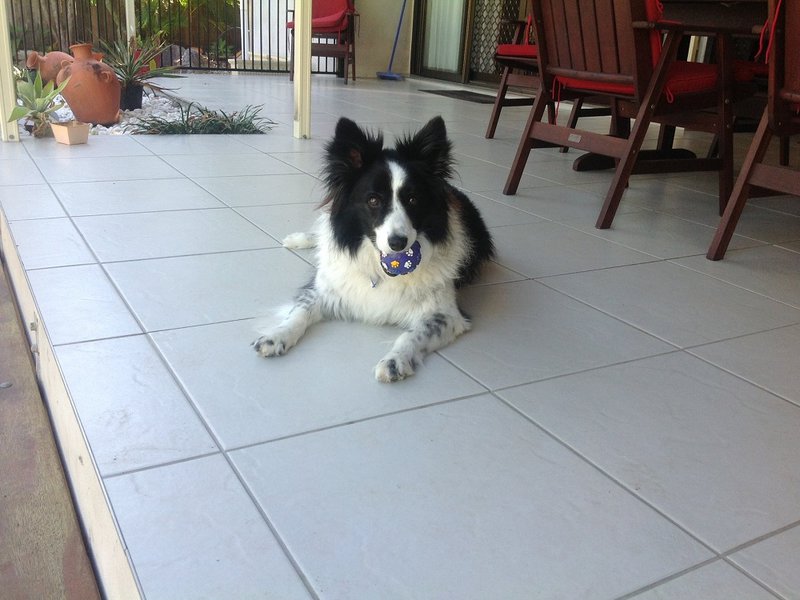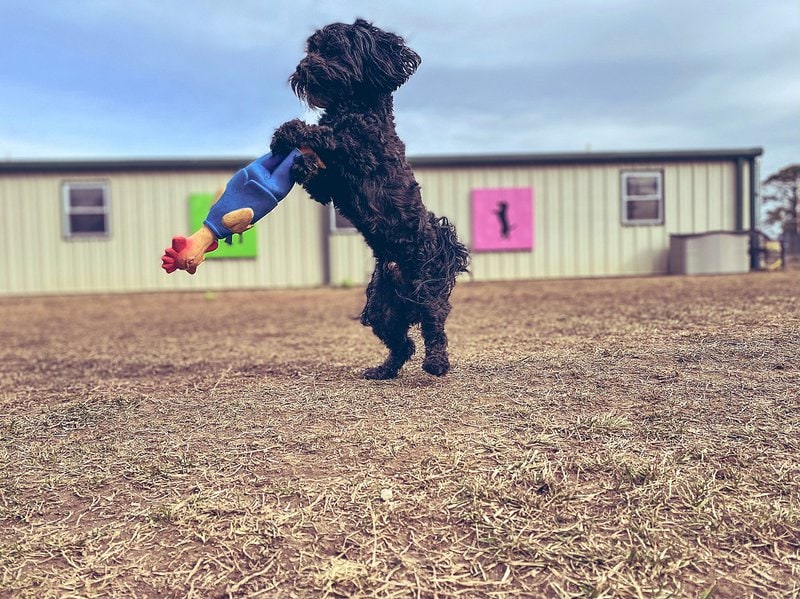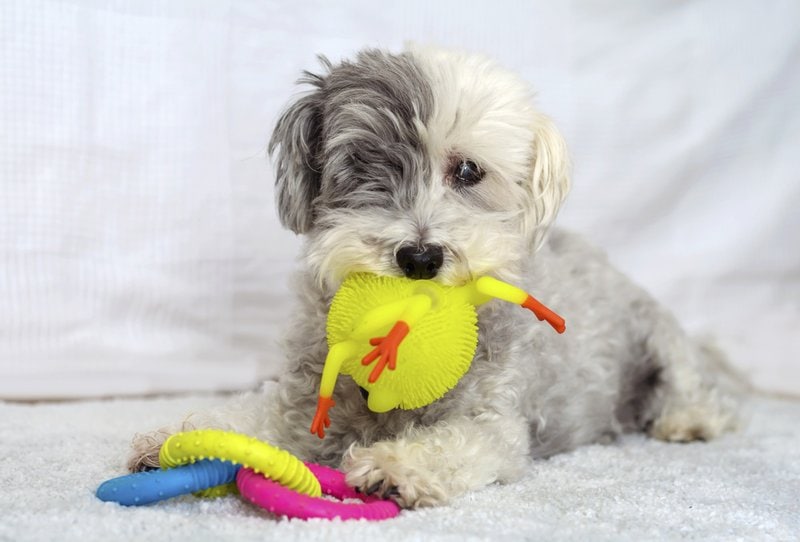If you are like most dog owners, then your dog’s toy basket is teeming with all kinds of toys – be it stuffed toys, tennis balls, or rubber chew toys. But what is it about those noisy playthings we often use for entertaining babies? Why do dogs like squeaky toys?
Dogs like squeaky toys because they offer them a way to satisfy their ingrained hunting instincts. These squeaks so much simulate the horrifying sounds of small prey animals when frightened, which in turn fuels your dog’s wild side, giving them a more urge to bite, attack, and subdue their “prey” until they eventually “kill” it – as though they were in the wild.
While it may not look like it, the fact is the interaction between your dog and their seemingly favorite toy is never a friendly one. There’s more to that than meets the eye. And yes, if patient enough, you’ll get to learn more about the ins and outs of dogs’ “love” for squeaky toys, including why some pups cry when you touch these toys. Just keep following to the end!
Why Do Dogs Love Squeaky Toys?

Dogs love squeaky toys more than almost anything else because they take them back to their ancient days in the wild. Dogs associate squeaky toys with small prey and the squeaks for the sounds these animals make when distressed.
In other words, dogs’ immense love for squeaky toys has something to do with the sound of these toys engaging their natural hunting instincts.
Dogs are often instinctively drawn to noises that indicate a potential prey, and the squeaker in a toy mimics the high-pitched noises that small prey make when they are under attack. This can be especially enticing to dogs who are natural hunters.
Another reason why dogs love squeaky toys is that they provide a fun challenge. Many dogs are drawn to toys that are difficult to get to, and squeaky toys fit that bill perfectly. Dogs will often try to figure out how to get the squeaker out of the toy, and this can provide hours of entertainment for them.
Do Dogs Think Squeaky Toys Are Alive?
No, dogs don’t think squeaky toys are alive. Squeakers don’t have a heartbeat, breath sounds, and bodily smells – and your dog knows that. However, these toys share so many similarities with live animals, and that’s why dogs prefer to transfer their prey drive onto them.
Dogs are intelligent beings. Your little buddy can tell the difference between something alive from one that isn’t, including inanimate things that so much appear as though living, for instance, squeaky toys.
These toys’ movements and noises do trigger a hunting response inside dogs, even though they know the toy isn’t real.
Again, dogs have a strong sense of smell. That’s what they often use to explore anything strange, including a new squeaky toy.
In fact, when you get your furry friend a squeaky toy, the first thing they usually do is sniff it. If they can’t smell any bodily odors, as is the case with squeaky toys, pups know at once that they are dealing with an inanimate thing.
That’s why sometimes you may notice your dog drop the toy quickly and ignore it for some other activity. That’s something dogs don’t do for a real hunt!
So, the next time your pooch is fixated on that toy, remember that it’s not because they think it’s alive – but rather because it’s the next best thing!
Are Squeaky Toys Good For Dogs?

Whether squeaking toys are good or bad for dogs depends. On the good part, squeaking toys are fun and will keep dogs physically and mentally engaged. On the negative side, some pups can swallow them, which definitely necessitates costly vet visits.
Squeaker toys have lots of benefits for dogs. They are fun, help gratify your canine’s prey drive, and keep dogs physically and mentally engaged, helping them avoid separation anxiety and stay away from some undesirable places.
However, like any other thing, squeaker toys have their downsides, too. For example, some dogs may ingest them, especially pups who love to eat almost anything they can sniff.
When ingested, a squeaker toy can be dangerous. It won’t “squeak” in your dog’s stomach, but it will cause something even worse after it gets into your dog’s body system.
Precisely, the moment a squeaker toy enters your dog’s system, it can cause an intestinal tear or gastrointestinal blockage, a potentially lethal condition.
Some toys may contain materials that are toxic to dogs when ingested. Toxicity will depend on what the toy is made of. But most plastic and rubber dog toys use dangerous additives such as bisphenol A – or BPA – which is the same additive that gives these materials the elasticity feature.
Again, squeaker toys can be laden with dangerous microbes. Most dog owners don’t view these toys from this perspective. But believe me, a squeaker toy can carry lots of life-threatening bacteria.
We still have some claims that these toys can cause anxiety in dogs. But whether that’s true will come later on our today’s discussion. At this point, the most important thing you need to know is that squeakers can be good or bad for dogs depending on their use and how sanitary you keep them.
Perhaps it leaves you a bit puzzled about whether you should let your dog play with squeaky toys or avoid them altogether. Well, it’s still understandable. And yes, we still have that within our scope. But first, let’s learn a few things that are just as essential!
Do Squeaky Toys Make Dogs Aggressive?
Yes, squeaky toys can make dogs aggressive. Squeaky toys are often used to play with dogs, but they can actually lead to aggression in some cases. The sound of the toy stimulates prey drive in pups, something that may make a dog aggressive.
But again, matters of dog aggression when using squeakers have much to do with the individual dog’s personality and the level of training. Well-trained dogs will seldom display aggression when playing with squeaky toys.
If you have a dog that tends to become aggressive when playing with squeaky toys, it is best to avoid using them altogether and offer the necessary training. Many other types of toys can be just as enjoyable for your dog without causing any issues. Talk to your vet if you are not sure which toys are best for your pup.
It is also important to be aware of how your dog is playing with squeaky toys. If they are becoming too aggressive, stop playing with them and try again later. You may also want to put the toy away when you are not around to keep your dog from displaying aggressive behavior to other pets trying to come in between the play.
Do Squeaky Toys Make Dogs Anxious?
Squeaky toys do make dogs anxious, but not all canines. Some dogs find the squeaking noise to be annoying, which can lead to them becoming anxious or stressed. If you think that your dog may have this reaction to squeaky toys, it is best to avoid buying them or squeezing them in front of your pup.
On the other hand, some dogs love the squeaking noise that squeaky toys make and even become excited when they hear it. These dogs are the ones that you will see playing with their squeaky toy for hours on end.
If you are unsure about whether or not your dog will react negatively to a squeaky toy, it’s best to start out by squeezing the toy and observing its reaction. If the dog responds by barking, whining, or running and hiding, then know that your canine is the kind that will develop anxiety from squeaky toys.
Should I Let My Dog Play With Squeaky Toys?
You can let your dog play with squeaky toys if the toys don’t make them anxious and if you are willing to play your part.
As a responsible dog parent, always supervise your dog’s interaction with squeaky toys and ensure that you sanitize the toy each time before your four-pawed friend begins to play with it.
Keeping a close eye on your dog when playing with a squeaker is one way to avoid the negative side of these toys. Close supervision helps you know when the interactions are about to become unsafe, allowing you to take precautionary measures to keep everything on the safe side.
Some dogs become so obsessed with squeaky toys that they can’t resist chewing them up. If your dog is one of these dogs, you’ll need to be especially vigilant about keeping the toy away from him when they are not playing with it.
Here, you will want to have a pup with some bit of knowledge on some basic cues. Training your dog on commands like “drop it” will save you the hassle of having to pull out the toy from your dog’s mouth when necessary and instead have them drop it instead.
So yes, squeaky toys are a lot of fun for dogs, but they can also be a bit of a safety hazard if they’re not handled properly. In other words, it’s okay to let your dog play with squeaky toys, but ensure that you are aware of the repercussions that may emanate from that action.

Should You Leave Squeaky Toys Out All The Time?
No, avoid leaving squeaky toys out all the time. Leaving these toys out may tempt your dog to rip the thing apart and eat the squeaker, something that won’t cause a very favorable outcome.
As much as dogs are intelligent, it’s always advisable to treat them like little kids. As a dog owner, keep an eye on whatever your dog is doing, including when playing with things like toys.
Some toys like squeaky variety, for instance, are tempting for dogs to eat. To most dogs, the urge to find and eat whatever is making the noise comes naturally and is almost irresistible.
With that said, if there isn’t someone to supervise the dog when playing with the toy, don’t give it to your dog. Most dog experts recommend that dogs play with squeaky toys only when under supervision. Otherwise, give them other toys that are much safer.
Why Do Dogs Cry When You Squeak Their Toys?
Some dogs cry when you squeak their toys as a way to express ownership or excitement. Where the cry is to claim possession of the toy, the dog may also exhibit aggressive behavior, especially if they lack training.
Many people believe that when a dog cries or whines in response to a squeaky toy, they are simply trying to communicate with us – something that canine behaviorists and other dog experts confirm to be the case.
And yes, one message dogs cry to pass when they hear a squeaky toy is that indeed what you are playing with is indeed theirs. In other words, they view the toy as something that belongs to them and wants to make sure that no one else can take it away.
Where claiming possession is the reason behind the cry, some dogs may go to the extent of showing possessive aggression. In such a case, it’s advisable to train your dog that handling their items doesn’t always result in their loss. Using positive reinforcement for the training will make your dog associate handling their possessions with a good outcome.
Another possible reason your dog may cry when you squeak their toys is as a sign of excitement. Dogs often get really excited when they hear a toy squeak, and the crying may be their way of expressing that excitement.
But again, when it comes to interpreting a dog’s body language, it’s important to remember that every dog is different, so if your dog cries or whines when you squeak their toys, it doesn’t necessarily mean that they are trying to communicate with you.
If you get to understand your dog well, then you’ll find it easier to get the gist of whatever message they are trying to pass. You will know if the cry has anything to do with the joyful ownership of the toy, excitement, or if there’s some other message attached to it.

Why Does My Dog Cry When He Plays With Squeaky Toys?
Dogs cry when playing with squeaky toys for the same reason they wag their tail or bark – it’s a way of communicating. Perhaps your dog needs your attention and sees crying as the only way to get it.
Alternatively, your dog could be trying to tell you that the toy is too noisy and needs to be put away. In whatever case, it’s important to pay attention to your dog’s body language and listen to what they are trying to say.
If your dog is constantly crying when playing with his squeaky toy, it could be a sign that they are anxious or stressed. As such, you may want to consider replacing it with a different type of toy.
One thing to keep in mind is that some dogs (especially those who are prone to seizures) can be adversely affected by the sound of squeaky toys. If your dog falls into this category, it’s best to avoid them altogether. Otherwise, you may wind up with a dog who is scared of squeaky toys – not exactly the outcome you’re going for!





